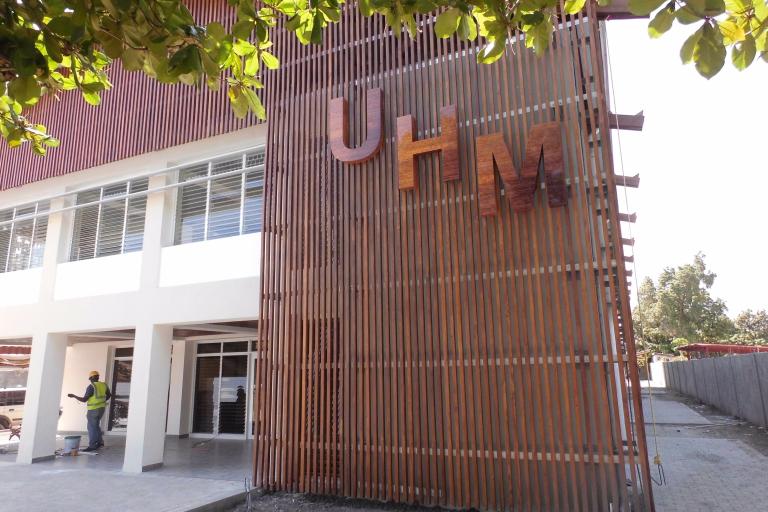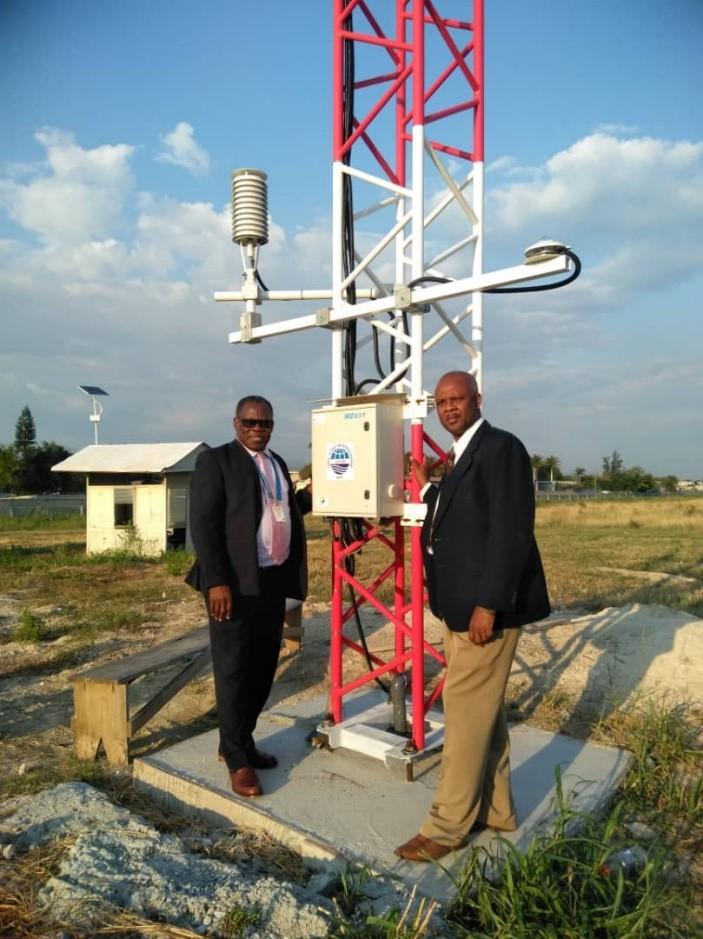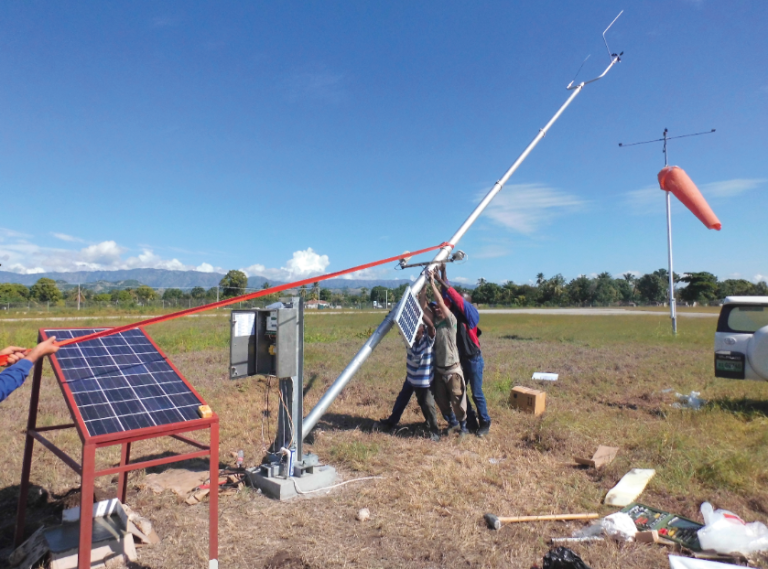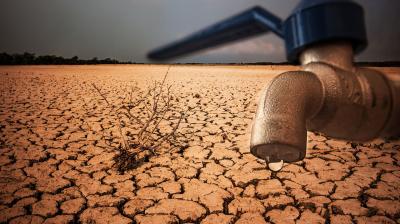Ten-year project modernizes Haiti’s meteorological and hydrological service
A successful ten-year project in Haiti has demonstrated the challenges, opportunities and benefits involved in rebuilding and modernizing a national meteorological and hydrological service in an LDC which is regularly hit by extreme weather and climate change impacts.

A successful ten-year project in Haiti has demonstrated the challenges, opportunities and benefits involved in rebuilding and modernizing a national meteorological and hydrological service in an LDC which is regularly hit by extreme weather and climate change impacts.
The Haiti Weather Systems Programme “Climate Services to Reduce Vulnerability”, provided essential support to re-establish and improve the main observation, forecasting and service delivery functions, which were destroyed in the 7.0 magnitude earthquake that shook the nation on 12 January 2010 and killed or injured more than 500 000 people.

"This project is one of the most beneficial projects of ECCC, together with WMO, for Haiti. The achievements, in addition to being tangible and real, provide a long-awaited framework for our staff in Haiti. This is not only a joy for those working in this field, but it is also for the people of Haiti as a whole” said Marcelin Esterlin, Coordinator of the UHM.
“In an era of climate change impacts through more extreme weather and climate events, a well-functioning national meteorological and hydrological service is a MUST. Haiti now has the capacity to generate and deliver weather and climate services and issue warnings for extreme events. The challenge as we move ahead lies in ensuring that they reach decision makers and those who need them most in an understandable manner so as to trigger appropriate preparedness and response measures, in line with the United Nations commitment to provide Early Warnings for All in the next 5 years” said Filipe Lúcio, Director of the Member Services and Development Department at WMO.
Jen Collette, Director General, Meteorological Service of Canada, said “Canada is pleased to have contributed to the re-establishment and rebuilding of both the physical and human resources supporting the UHM. This support was vital to restoring Haiti’s capacity to provide information on weather and climate, including warnings of severe storms and hurricanes, to its citizens. Hydrological and meteorological services are essential to protect people and their property from the hazards of events such as hurricanes and other storms, and to support important economic sectors such as agriculture and transportation”.
The project enabled the construction of an earthquake and hurricane-proof headquarters building for the UHM – bringing together the former meteorological and hydrological entities under one roof. It opened in May 2017, replacing temporary prefabricated huts. Its proven resilience to extreme events has allowed the UHM to continue operations when services are most needed. Installed solar panels mean the building has net zero emissions and can function even during electricity outages.
Following the inauguration of the building, the focus of the project was shifted to long-term priorities. Main achievements include:
- the development of a UHM website which will disseminate regular, up-to-date, and accurate forecasts and warnings, as well as satellite observations and information for marine and aviation sectors;
- the development of a National Strategic Plan including a strategy to change the UHM’s legal status under the Ministry of Agriculture, Natural Resources and Rural Development, and outline the UHM’s engagement with local stakeholders including the civil protection and food security offices;
- the re-installation and modernization of a network of synoptic stations. Six automatic weather stations and one airport weather adviser system are now operational. Before the project, there were only three synoptic weather stations. The data was recorded manually and transmitted by telephone by observers to the forecaster who encoded messages and posted them via a web interface;
- the provision of technical assistance and equipment for forecasting and aeronautical services;
- the implementation and integration of a data management and flash flood guidance system;
- the strengthening of climatological observing networks.

Currently, the UHM has 55 staff members, three of whom are forecasters, and two hydrologists. To ensure sustainability, the project also provided several training courses, enhancing the capacity of both scientific and technical personnel within the UHM. This has been strongly supported by Météo-France and Meteo France International, the Caribbean Institute for Meteorology and Hydrology (CIMH), the Cuban Institute for Meteorology (INSMET) and the Regional Specialized Meteorological Centre (RSMC) in Miami.
Early warnings
Haiti is the poorest country in the western hemisphere. In addition to earthquakes, it is regularly hit by hurricanes and is also vulnerable to drought, floods and impacts from climate change including sea-level rise. In August 2021, a 7.2 magnitude earthquake killed more than 2 000 people and injured nearly 13 000.
To ensure the sustainability of the project’s investments, the focus has now shifted to increasing the capacity of the UHM to deliver co-produced multi-hazard alerts. It also needs to strengthen its cooperation with key ministries, priority sectors and communities and implement the national strategic plan despite the challenges of political and economic uncertainty.
This will be realized through a three-year project entitled “Support of the UHM for sustainable operability and the implementation of a relevant and efficient hydrometeorological warning system” funded by the Climate Risk and Early Warning Systems (CREWS) Initiative.










